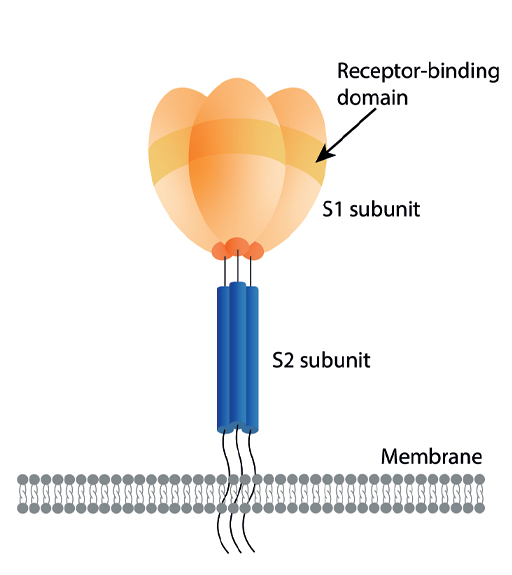2.3 Proteins encoded by SARS-CoV2
The genome of SARS-CoV2 is large for an RNA virus. It consists of a single piece of positive sense ssRNA with 29,903 nucleotides which encode 19 proteins, as shown in Figure 8. Two genes encode 16 non-structural proteins nsp1-nsp16. The genes for the four structural proteins (Spike, Envelope, Membrane glycoprotein, Nucleocapsid) and the auxiliary proteins (3a, 6,7,8,10) are indicated. There are untranslated regions (UTR) at the 5’ and 3’ ends of the genome. The non-structural and auxiliary proteins are required for virus replication, assembly and release.
New variants of SARS-CoV2 have shown mutations in many of these genes. However, it is variation in the spike protein that is of particular interest and importance, because antibodies against the spike protein are protective against infection, and the spike protein is the key component of all current vaccines against COVID-19 (Feb. 2023).
Figure 9 shows the spike protein diagrammatically. It is a trimeric glycoprotein with two subunits, which is inactive until it comes into contact with a host cell. On contact, an enzyme on the host cell surface (TMPRSS2) cleaves and activates the spike protein so that it can now bind to the ACE2 receptor.
In the next section, you will now start to look at how the immune system can recognise a viral infection.


